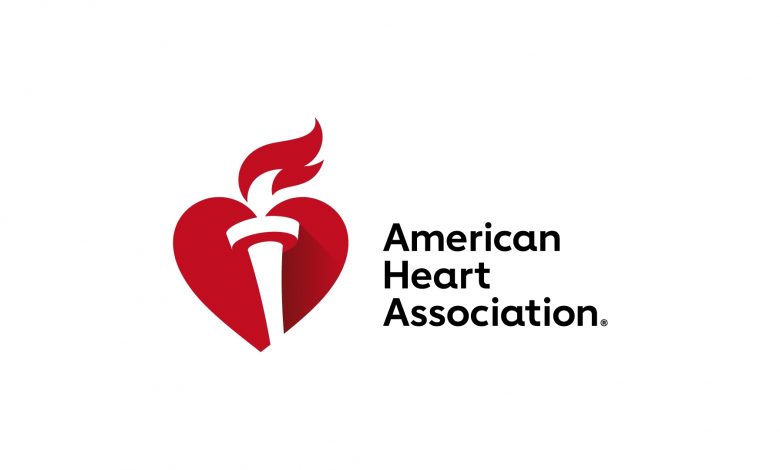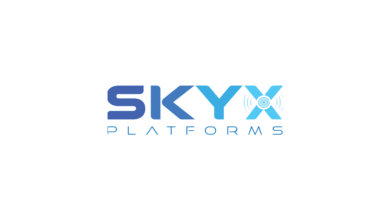Viruses are the most common cause of myocarditis in children, experts offer guidance

[ad_1]

Statement Highlights:
- Viral infection is the most common cause of inflammation in the heart muscle, called myocarditis, in children; however, there remains a diverse array of infectious and non-infectious causes of myocarditis that should be considered in diagnosis.
- Myocarditis caused by a virus is more often seen in children than in adults, and children are more likely to have acute myocarditis (sudden onset) rather than chronic myocarditis, which is more typically seen in adults.
- The emergence of COVID-19 has led to the description of a new multisystem inflammatory syndrome in children (MIS-C) that can involve the heart muscle and heart arteries in some infected patients.
- The new scientific statement from the American Heart Association is helpful in guiding the diagnosis and treatment of myocarditis in children. And while not explicitly addressed, since this statement was in development prior to the COVID-19 pandemic, the statement is also useful in informing the clinical care of suspected cases of myocarditis after COVID-19 vaccination and myocarditis after COVID-19 infection, which have been reported primarily in teens and young adults.
Embargoed until 4 a.m. CT/5 a.m. ET Wednesday, July 7, 2021
(NewMediaWire) – July 07, 2021 – DALLAS – Myocarditis in children is a rare yet challenging condition to treat. Diagnosis and treatment includes multiple options, and many cases of myocarditis resolve on their own, according to a new scientific statement from the American Heart Association, “Diagnosis and Management of Myocarditis in Children,” published today in Circulation, the Association’s flagship journal. The scientific statement writing group reviewed the latest research to develop guidance in diagnosis and treatment for myocarditis in children.
Myocarditis is inflammation of the middle layer of the wall of the heart muscle, the myocardium, and it can temporarily or permanently weaken the heart muscle and the heart’s electrical system, which keeps the heart pumping regularly. Approximately 10 to 20 per 100,000 people are diagnosed with myocarditis in the U.S. annually, and in children, the incidence is 1 to 2 per 100,000. Although many cases resolve on their own or with treatment, leading to a full recovery, severe myocarditis can lead to heart failure, abnormal heart rhythms, shock and sudden death. Signs and symptoms of myocarditis include fatigue, shortness of breath, fever, chest pain and palpitations .
“Myocarditis has distinct characteristics in children and a potential impact on their lifelong health,” said Yuk M. Law, M.D., FAHA, chair of the scientific statement writing group, director of Cardiac Transplant and Heart Failure Service at Seattle Children’s Hospital and professor of pediatrics at the University of Washington School of Medicine in Seattle. “We hope that this statement serves as an educational update as well as a unifying call for much needed research to better understand and treat this important pediatric condition. And, in light of the recently recognized occurrence of myocarditis after COVID-19 infection, as well as the emergence of cases of suspected myocarditis after COVID-19 vaccination, this statement is a resource for clinicians and health care professionals in caring for these patients.”
Direct tissue examination from a biopsy is the standard for proving the presence of myocarditis, which can also identify if viruses are present. However, less invasive testing is widely available now. Additional screening tests for myocarditis may include blood tests to measure for elevated cardiac enzymes that would indicate heart inflammation or injury, including myoglobin, troponin and creatine kinase. Imaging tests include an echocardiogram or a cardiac magnetic resonance imaging (MRI) to determine if there is any visible injury to the heart or abnormalities in how the heart is functioning. Electrocardiography (ECG) screening can assess the heart rhythm and may show signs of injury to the heart as well as signs of pericarditis. Pericarditis is often related to myocarditis and involves swelling and inflammation of the pericardium, a thin, sac-like tissue structure that surrounds the heart to hold it in place and help it function properly.
Key guidance in the statement includes:
- The incidence of myocarditis in children varies with age, being higher in infants and rising again in young adults.
- Patients should not participate in competitive sports while active inflammation is present. In addition to normalization of inflammatory and myocardial injury markers, as well as ventricular function and heart failure, 24-hour Holter monitoring and exercise stress testing should be performed in athletes no sooner than 3 to 6 months after diagnosis and before they return to competition.
- In children, myocarditis is most often the result of a viral infection, and it is most often acute or sudden-onset, rather than chronic myocarditis, which is seen more often in adults.
- Symptoms in children can range from minimal to showing signs of heart failure, life-threatening arrhythmias or cardiogenic shock.
- The most common symptoms of myocarditis in children include fatigue, shortness of breath, abdominal pain and fever. (Of note, the primary symptom reported in patients with COVID-19 vaccine-associated suspected myocarditis is chest pain.) However, it is important to consider alternative causes of these symptoms since none of them are specific to cardiovascular conditions including myocarditis.
- Acute myocarditis can deteriorate rapidly, therefore, close monitoring in an inpatient setting should be considered.
- The early phase of care should include monitoring for atrial or ventricular arrhythmias. The management of arrhythmia is addressed in the 2017 AHA/ACC/HRS Guideline for Management of Patients with Ventricular Arrhythmias and the Prevention of Sudden Cardiac Death.
- Acute myocarditis may lead to myocardial injury similar to a heart attack. Early intervention with mechanical circulatory support (MCS) should be considered for high-risk patients and can be lifesaving.
- Treatment with antiviral and immunotherapies including intravenous immunoglobulin and corticosteroids is common; however, additional evidence-based research is needed to define these treatments more clearly for children.
- Antiviral therapy should be considered if an active viral infection is found.
- Myocarditis can also be seen secondary to systemic autoimmune diseases and is associated with rheumatic fever or Kawasaki disease. In these cases, it should be managed according to the guidance for the primary disease.
- A new condition has emerged during the COVID-19 pandemic – multisystem inflammatory syndrome in children (MIS-C) – that involves the myocardium and coronary arteries in some infected patients. Therapy may consist of antiviral, IVIG (intravenous immunoglobulin), steroid and other anti-inflammatory medications used in atypical Kawasaki disease.
- Regular cardiology follow-up including ECG, echocardiography and laboratory tests are recommended initially every 1 to 3 months after onset, then as needed.
“While our work on this scientific statement preceded the COVID-19 pandemic and the cases of suspected myocarditis after COVID-19 vaccination and after COVID-19 infection being reported in adolescents and young adults, the guidance detailed in this scientific statement can help to advise treatment for these patients as well,” Law said.
Specific to the suspected cases of myocarditis after COVID-19 vaccination in teens and young adults recently reported and continuing to be monitored by the U.S. Centers for Disease Control and Prevention (CDC), the following statement reflects the views of the American Heart Association/American Stroke Association and its science leaders:
- President Donald M. Lloyd-Jones, M.D., Sc.M., FAHA,
- Immediate Past President Mitchell S.V. Elkind, M.D., M.S., FAHA, FAAN,
- President-Elect Michelle A. Albert, M.D., M.P.H., FAHA,
- Past President Robert A. Harrington, M.D., FAHA,
- Chief Science and Medical Officer Mariell Jessup, M.D., FAHA,
- Chief Medical Officer for Prevention Eduardo Sanchez, M.D, M.P.H., FAAFP, and
- Chair of the Young Hearts Council Shelley Miyamoto, M.D., FAHA.
“The American Heart Association/American Stroke Association recommends all health care professionals be aware of rare adverse events that may be related to a COVID-19 vaccine including myocarditis. Health care professionals should strongly consider inquiring about the timing of any recent COVID vaccination among patients presenting with symptoms related to cardiovascular conditions, as needed, in order to confirm the diagnosis and to provide appropriate treatment quickly. As indicated by the CDC, we agree that cardiologists should be consulted if myocarditis or any heart-related condition is suspected by a primary care clinician.
“This new scientific statement provides a thorough examination of the latest research on the diagnosis, treatment and follow-up for myocarditis in children prior to the COVID-19 era and confirms that myocarditis is a serious yet uncommon condition in children. The effects of COVID-19 infection include its potentially fatal consequences and the potential long-term health effects that are still revealing themselves, such as conditions affecting the heart including myocarditis, the brain, the vascular system and other organs.
“We remain steadfast in our recommendation for all adults and children ages 12 and older in the U.S. to receive a COVID-19 vaccine as soon as they can receive it, as authorized by the U.S. Food and Drug Administration and recommended by the CDC. Overwhelmingly, data continue to indicate that the benefits of COVID-19 vaccination – 91% effective at preventing complications of severe COVID-19 infection including hospitalization and death – far exceed the very rare risks of adverse events, including myocarditis.”
The scientific statement was prepared by the volunteer writing group on behalf of the American Heart Association’s Pediatric Heart Failure and Transplantation Committee of the Council on Lifelong Congenital Heart Disease and Heart Health in the Young (the Young Hearts Council); and the Stroke Council. The statement is endorsed by the Myocarditis Foundation.
Co-authors and members of the volunteer writing group are Vice Chair Ashwin K. Lal, M.D.; Sharon Chen, M.D., M.P.H.; Daniela Cihakova, M.D., Ph.D.; Leslie T. Cooper Jr., M.D., FAHA; Shriprasad Deshpande, M.B.B.S., M.S.; Justin Godown, M.D.; Lars Grosse-Wortmann, M.D.; Joshua D. Robinson, M.D.; Jeffrey A. Towbin, M.D., FAHA. Author disclosures are in the manuscript.
Additional Resources:
The Association receives funding primarily from individuals. Foundations and corporations (including pharmaceutical, device manufacturers and other companies) also make donations and fund specific Association programs and events. The Association has strict policies to prevent these relationships from influencing the science content. Revenues from pharmaceutical and biotech companies, device manufacturers and health insurance providers and the Association’s overall financial information are available here.
About the American Heart Association
The American Heart Association is a relentless force for a world of longer, healthier lives. We are dedicated to ensuring equitable health in all communities. Through collaboration with numerous organizations, and powered by millions of volunteers, we fund innovative research, advocate for the public’s health and share lifesaving resources. The Dallas-based organization has been a leading source of health information for nearly a century. Connect with us on heart.org, Facebook, Twitter or by calling 1-800-AHA-USA1.
###
For Media Inquiries: 214-706-1173
Michelle Kirkwood: 703-457-7838; michelle.kirkwood@heart.org
For Public Inquiries: 1-800-AHA-USA1 (242-8721)
heart.org and stroke.org
[ad_2]




